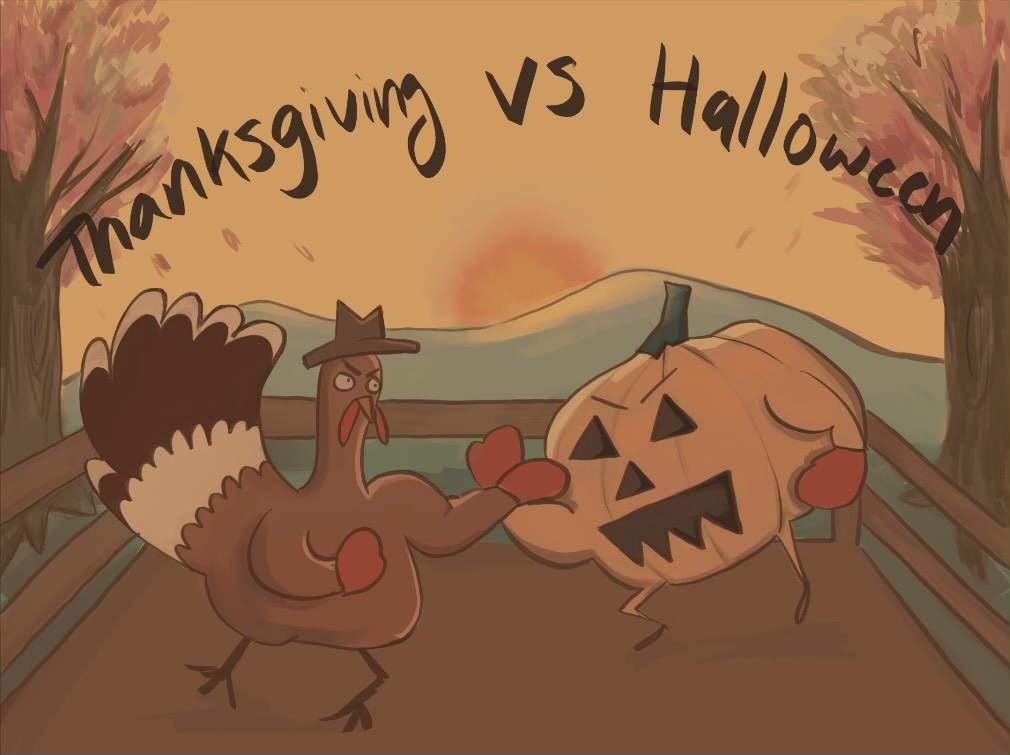
Halloween and Thanksgiving are two beloved holidays celebrated in the United States, but they couldn’t be more different. While both involve festive traditions and gatherings, their origins, themes, and celebrations are distinct. Understanding these differences can help you fully appreciate the unique charm of each holiday. This article will delve into the key distinctions between Halloween and Thanksgiving, exploring their history, traditions, and significance.
Halloween vs. Thanksgiving
At their core, Halloween and Thanksgiving represent contrasting concepts. Halloween is a celebration of the supernatural and macabre, embracing spooky costumes, haunted houses, and trick-or-treating. It’s a night for letting loose, indulging in playful fear, and celebrating all things eerie. In contrast, Thanksgiving is a deeply rooted holiday focused on gratitude, family, and togetherness. It’s a time to reflect on blessings, share a bountiful feast with loved ones, and express appreciation for the good things in life.
Halloween Traditions
Halloween traditions are as diverse as the costumes people wear. Trick-or-treating is arguably the most iconic tradition, where children dress up in elaborate costumes and go door-to-door asking for candy. Haunted houses offer thrilling experiences for those seeking a scare, while pumpkin carving allows for creative expression and spooky decorations. Parties with themed food, drinks, and music are also popular ways to celebrate Halloween.
The Origins of Halloween
Halloween’s roots can be traced back to the ancient Celtic festival of Samhain, celebrated on October 31st. Celts believed that on this night, the boundary between the worlds of the living and the dead became blurred, allowing spirits to roam freely. They lit bonfires and wore costumes to ward off these spirits. Over time, Halloween evolved into a secular celebration with its focus on fun and festivities.
Thanksgiving Traditions
Thanksgiving traditions revolve around family, feasting, and gratitude. The centerpiece of the celebration is the traditional Thanksgiving meal, which typically includes roasted turkey, stuffing, mashed potatoes, cranberry sauce, and pumpkin pie. Families gather together to share this feast, express their thanks for the year’s blessings, and enjoy each other’s company.
The History of Thanksgiving
Thanksgiving has its origins in a harvest celebration held by the Pilgrims in Plymouth, Massachusetts, in 1621. They shared a three-day feast with the Wampanoag tribe, giving thanks for their successful harvest and survival in the new land. This event is widely considered the first Thanksgiving, although the holiday wasn’t officially recognized until much later.
Dates and History
Halloween is celebrated annually on October 31st, while Thanksgiving is observed on the fourth Thursday of November. Both holidays have rich histories that have evolved over centuries, incorporating various cultural influences and traditions.
Key Differences
While both Halloween and Thanksgiving are cherished holidays, their core themes and celebrations differ significantly. Halloween embraces the spooky and supernatural, encouraging playful fear and costumes. Thanksgiving, on the other hand, centers around gratitude, family, and feasting, promoting togetherness and reflection.
Conclusion
Halloween and Thanksgiving offer distinct experiences that enrich our cultural landscape. Whether you prefer the thrills of trick-or-treating or the warmth of a shared Thanksgiving feast, both holidays provide opportunities for celebration, connection, and creating lasting memories. Understanding their unique characteristics allows us to appreciate the diversity and richness of American traditions.
